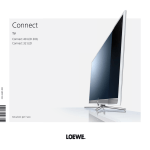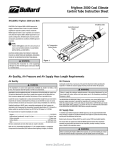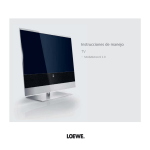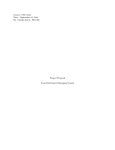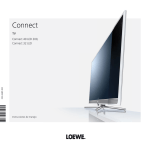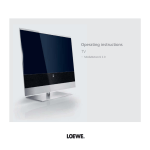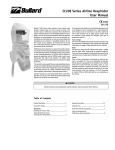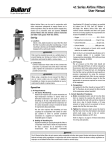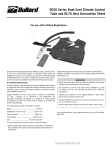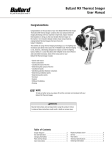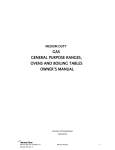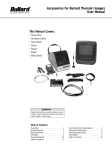Download www.bullard.com Dual-Cool™ Climate Control Tube and DC65 Vest
Transcript
Dual-Cool™ Climate Control Tube and DC65 Vest User Manual TM For use with PC90 Series Containment Airline Respirators Includes: DC60 Series Dual-Cool tube, cooling vest connector hose, reinforcing rings, belt bracket, and belt. Note: The DC65 cooling vest and respirator breathing tube must be ordered separately. The requirements for Grade D breathable air include: Function: The DC60 Dual-Cool tube is NIOSH approved to supply a continuous flow of cool air to Bullard PC90 Series supplied-air containment respirators. All Bullard parts must be present and properly assembled to constitute a NIOSH approved respirator. Carbon monoxide ...................................................... 10 ppm max. NOTE The DC60 Dual-Cool tube cannot be used with a low pressure air source such as an ambient air pump. No toxic contaminants at levels that make air unsafe to breathe. Air Quality Requirements Respirable air must be supplied to the point-of-attachment of the NIOSH approved Bullard air supply hose, where the air supply hose connects to the fitting. Always use an inlet filter on your air source and monitors and alarms as necessary to assure clean, breathable air. Supplied breathing air must at least meet or exceed the requirements for Type 1 gaseous air as described in the Compressed Gas Association Commodity Specification G-7.1 (Grade D or higher quality) and specified by Federal Law 42 CFR, Part 84, Subpart J, 84.141(b) and 29 CFR 1910.134(i)(1)(ii). Oxygen ......................................................................... 19.5-23.5% Hydrocarbons in mg/m3 of gas .............................. 5 mg/m3 max. Carbon dioxide ..................................................... 1,000 ppm max. Odor ............................................................ No pronounced odor* * Specific measurement of odor in gaseous air is impractical. Air normally may have a slight odor. The presence of a pronounced odor should render the air unsatisfactory. Contact the Compressed Gas Association (1235 Jefferson David Highway, Arlington, VA 22202 or www.cganet.com) for complete details on Commodity Specification G-7.1. WARNING Before using this product, read and follow all directions and warnings, including those in the respirator instruction manual. The respirator’s air source must supply clean, breathable air, Grade D or better, at all times. The respirator does not purify air or filter out contaminants. Connecting the respirator to a line supplying nitrogen or other harmful gases could cause death or serious injury. Failure to follow these instructions could result in death or serious injury. www.bullard.com TM Air Pressure Air Supply Hose Breathing air pressure must be continually monitored at the pointof-attachment while operating the respirator. A reliable air pressure gauge must be present to monitor the pressure during respirator operation. To maintain your Bullard respirator’s NIOSH approval, use only approved Bullard V10 Series hose(s) in lengths of 50 to 300 feet, or Bullard V5 Series hose in lengths of 25 to 50 feet. Bullard V11 hose-to-hose adapters MUST be used to connect V10 hose lengths together. Secure connection(s) until wrench tight and leak free. WARNING NOTE Do not use a quick-disconnect fitting to connect a V10 hose to the air source. This would restrict airflow and is not approved in this configuration. Failure to supply the minimum required pressure at the point-ofattachment for your hose length and type will reduce airflow and could result in death or serious injury. Make certain that your breathing air compressor has sufficient capacity to deliver a minimum of 30 cfm per respirator wearer at all times. Because Dual-Cool has two cool tubes, it requires a higher than normal volume of air. The Breathing Air Pressure Table on the next page defines the air pressure ranges necessary to provide the PC90 Series respirators with a volume of air that falls within the required range of 6-15 cubic feet per minute (cfm) or 170-425 liters per minute (lpm). (See 42 CFR, Part 84, Subpart J, 84.150). To use the table, follow the steps identified below: 1. Confirm the air source, respirator model, breathing tube, and Dual-Cool tube assembly (Columns 1-4). 2. Confirm your choice of NIOSH approved Bullard air supply hose(s) (Column 5). 3. Determine that your air supply hose does not exceed the maximum approved hose length (Column 6) or number of hose sections (Column 7). 4. Set the air pressure at the point-of-attachment within the required pressure range (Column 8) for your air supply hose length. WARNING Use of any other air supply hose voids NIOSH approval of the entire respirator assembly and might reduce the airflow to the respirator, which could result in death or serious injury to the respirator wearer. Compressed air must be dry enough to prevent ice buildup in the cold airstream. Ice could reduce airflow into the respirator hood. WARNING The DC60 Dual-Cool climate control system is not recommended for cooling the air supply when the air temperature is less than 70° F. Because the DC60 Dual-Cool may cool the incoming air by more than 30° F, it is possible for ice to form in the breathing tube and reduce the airflow. Failure to observe these warnings could result in death or serious injury. Replacement Parts CATALOG NUMBER DESCRIPTION DC65ML Medium/Large Cooling Vest DC65XLXXL X-Large/XX-Large Cooling Vest CH60 DC50 Series Dual-Cool Connector Hose 4612 Nylon Belt Breathing Air Pressure Table This table defines the air pressure ranges necessary to provide the PC90 respirator with a volume of Grade D breathable air that falls within the U.S. Government required range of 6-15 cfm (or 170-425 lpm). See 42 CFR, Part 84, Subpart J, 84.150. (1) Air Source Stationary (2) (3) Respirator Breathing Tube PC90 90BT or portable compressor 90BTF (4) (5) (6) (7) (8) Air Supply Hose Maximum Air Supply Hose Length (feet) Maximum Number of Hose Sections Required Pressure Range (psig air) DC6040 1/4" Ind. Int., steel 50 2 48-52 DC604B 1/4" Ind. Int., brass 100 3 59-63 150 3 68-72 Dual-Cool Tube Assembly DC6040S 1/4" Ind. Int., stainless V10 supplying DC6041 1/4" Schrader 200 3 80-84 DC6042 1/4" Snap-Tite, steel 250 3 85-92 breathing DC6043 1/4" Snap-Tite, brass 300 5 90-98 air DC6044 1/4" Snap-Tite, stainless 25 1 53-57 50 2 67-71 Grade D 90ELF V5 DC6047 1/4" Cejn, steel Dual-Cool™ Climate Control Tube and DC70 Vest Instructions Assembly and Use 2. Install the small nylon clamp over the air entry sleeve and cooling vest connector hose. Engage the clamp locks and squeeze until tight (Figure 3). Assembly must be conducted in an uncontaminated atmosphere. Preparing the CS90 Containment Suit for the Dual-Cool Tube 1. Place the CS90 containment suit on a flat surface with front side up. Measure approximately 23" down from the top of the shoulder seam and 1" in front of the suit’s right side seam. Mark this location with a pen (Figure 1). To remove To tighten To tighten Figure 3 Assembling the DC60 Dual-Cool Tube 1. Remove the nylon clamp from the open end of the respirator’s breathing tube. Insert the breathing tube 5 inches into the PC90 respirator parka’s breathing tube sleeve.(Figure 4). Figure 1 NOTE These measurements are only a guideline. Adjust for individual fit. 2. Peel the paper from one adhesive-backed reinforcing ring and apply the ring to the suit with your location mark in the center of the ring. Use small, sharp scissors to cut out the suit material in the center of the ring. 3. Add a second reinforcing ring to the underside of the garment, directly beneath the first ring. Figure 4 NOTE Do not remove foam from inside breathing tube. The foam helps reduce the noise level of incoming air. 2. Install the large nylon clamp over the breathing tube sleeve and breathing tube, inserting the clamp locks through the two holes in the plastic anchorplate. Locks should face away from the user’s neck. Engage the clamp locks and squeeze until tight (Figure 3). 3. Lace the belt through the slots in the belt bracket (Figure 5). Assembling the DC65 Cooling Vest 1. Insert the muffler end of the cooling vest connector hose well into the air entry sleeve of the vest (Figure 2). 4. Place left hand around the belt bracket, and right hand around the Dual-Cool tube. Squeeze the quick-disconnect lever with your right thumb and pull the bracket and shaft away with your left hand (Figure 5). 5. Unscrew and remove the plastic ring nut from the shaft (Figure 5). 6. Screw the breathing tube onto the threaded connector on the Dual-Cool (Figure 5). Vest “V” or notch Figure 2 TM Head Protection Respiratory Protection Fire and Rescue Safety Thermal Imaging Donning the Dual-Cool Tube and Cooling Vest 1. Don the belt, belt bracket, and Dual-Cool. Adjust belt comfortably, but loosely, around your waist. 2. Don the vest. Use the hook and loop closure strips to adjust loosely for size. NOTE The vest should mount over the belt with the DualCool unit positioned in the "V" of the vest found on the right-hand side (Figure 2). 3. Snap the quick-disconnect nipple found on the end of the cooling vest connector hose into the quick-disconnect coupler on the Dual-Cool (Figure 5). Air supply hose Figure 6 8. Adjust the air pressure at the point-of-attachment to within the approved pressure range (Figure 7). See the Air Pressure section on the previous page. Pressure gauge Point-ofattachment Grade “D” breathable air source Quick-disconnect nipple Quick-disconnect nipple 9. Don the PC90 parka by following the directions in your PC90 instruction manual. Left-hand temperature control knob-for Dual-Cool vest Belt Figure 5 4. Don the CS90 by following the directions in your PC90 instruction manual. If you do not have instructions, contact Bullard Sales Support at the address or phone number given below, or visit the Bullard website, www.bullard.com. 5. With the approved Bullard air supply hose connected to the breathing air source, and with air flowing into the hose, connect the quick-disconnect coupler on the air supply hose to the quick-disconnect nipple on the Dual-Cool (Figure 6). 6. Slide the shaft that is attached to the belt bracket through the reinforced opening in the suit (Figure 6). 7. Thread the plastic ring nut onto the shaft (Figure 6). Tighten firmly against the suit. Bullard 1898 Safety Way Cynthiana, KY 41031-9303 Toll free: 877-BULLARD (285-5273) Tel: 859-234-6616 Fax: 859-234-8987 www.bullard.com Bullard GmbH Hochkreuzallee 36 53175 Bonn-Bad Godesberg Germany Tel: +49 228 931933 0 Fax: +49 228 931933 50 10. While squeezing the quick-disconnect lever, reconnect the Dual-Cool tube to the shaft on the outside of the suit, pressing firmly until it locks in position (Figure 6). Operating the Dual-Cool Tube 1. To obtain cooler air, turn the air temperature control knobs counterclockwise (Figure 5). Maximum cooling is obtained when knobs are open completely and when there is maximum airflow out of the Dual-Cool tube’s exhaust ports. To obtain air that is closer to ambient temperature, turn air temperature control knobs clockwise. If knobs are closed completely, your respirator will receive air that is essentially at ambient temperature. NOTE There are separate controls to adjust the temperature of the air that is distributed to the vest and the breathing zone. The right-hand knob controls the air temperature to the respirator; the left-hand knob controls the air temperature to the cooling vest (Figure 5). 2. When finished working, leave the work area wearing the respirator. With the air still flowing, remove the hood, and then disconnect the air supply hose using the quick-disconnect coupler attached to the Dual-Cool. IS O Threaded connector Left-hand temperature control knob-for respirator 9 0 01 ed Cooling vest Connector hose ifi Quick-disconnect nipple Breathing tube Figure 7 Air supply hose Ce rt ISO 9001 certified ©2001 Bullard. All rights reserved, including the right of reproduction, in whole or in part, in any form. “It’s your life and you’re worth it,” and Dual-Cool are trademarks of Bullard. 6088000325(0901)





